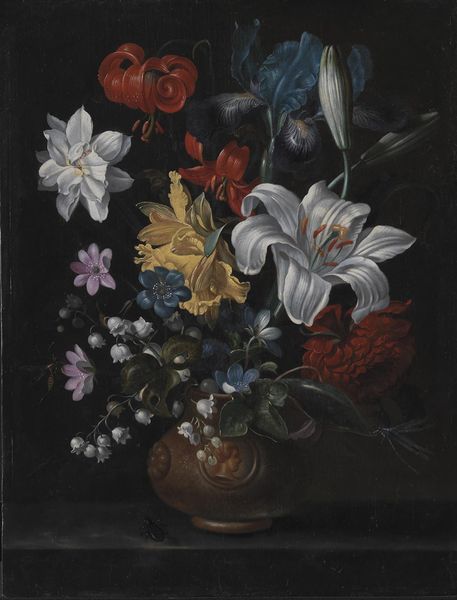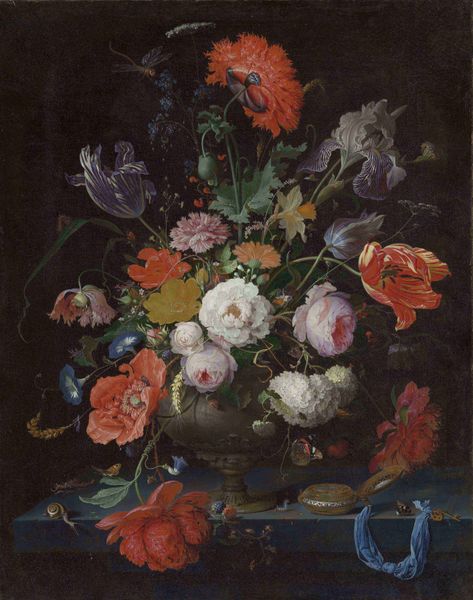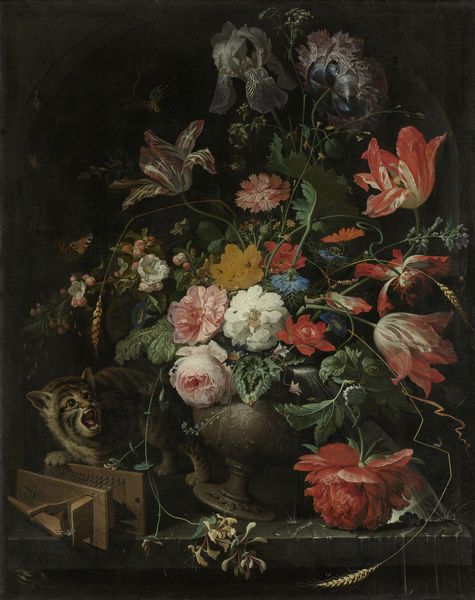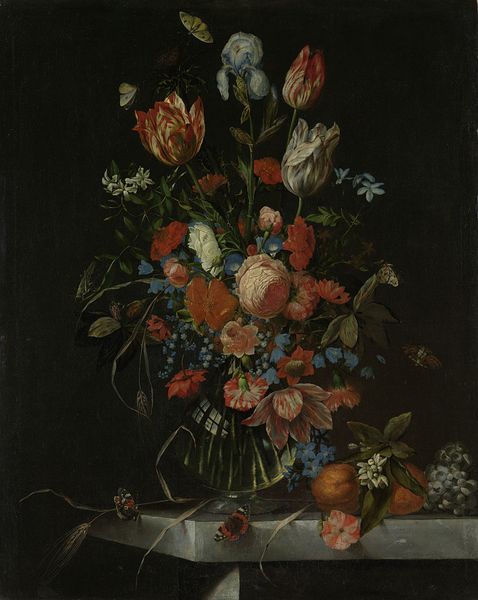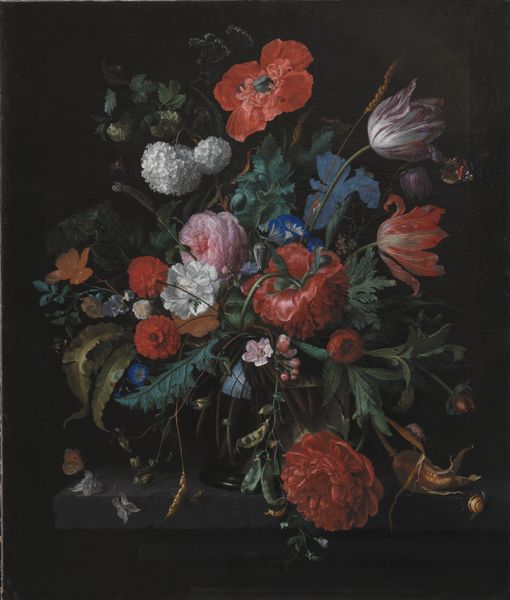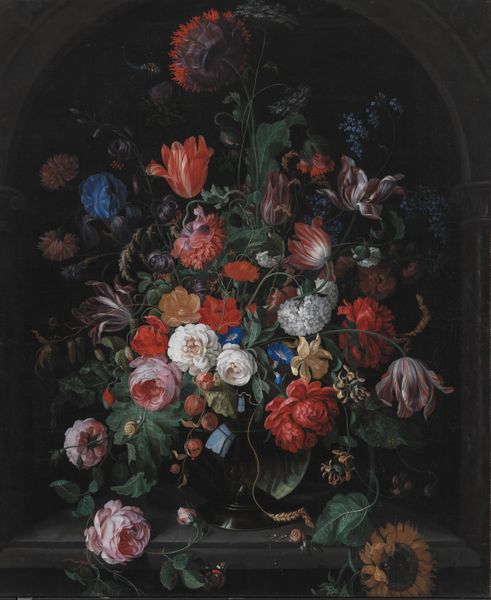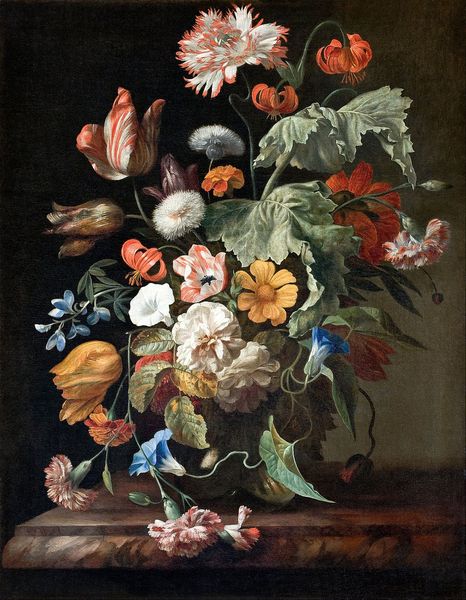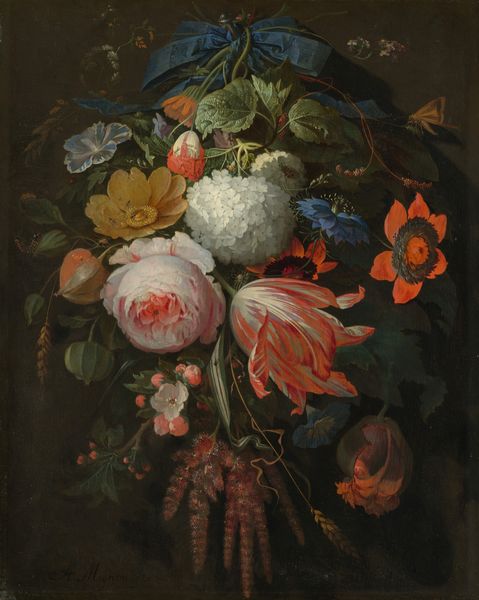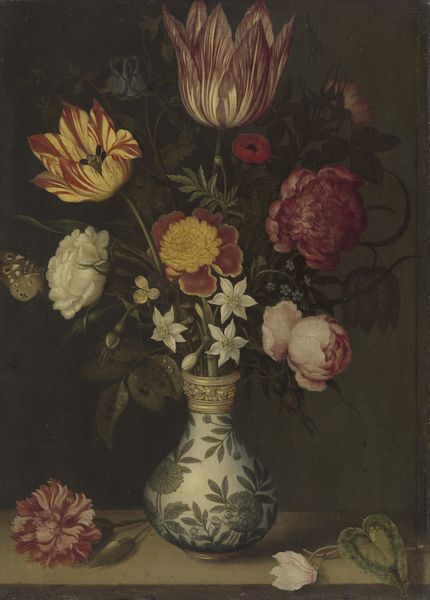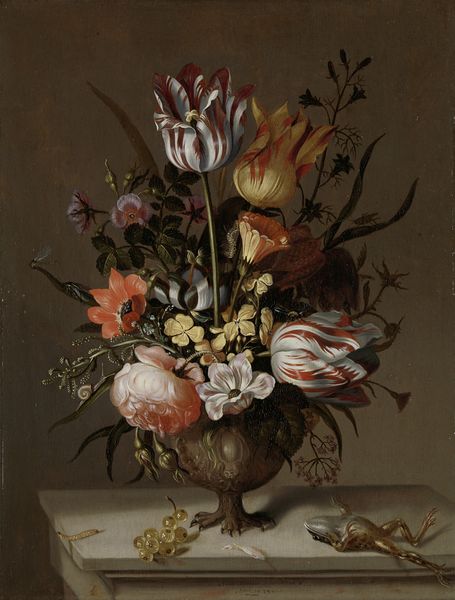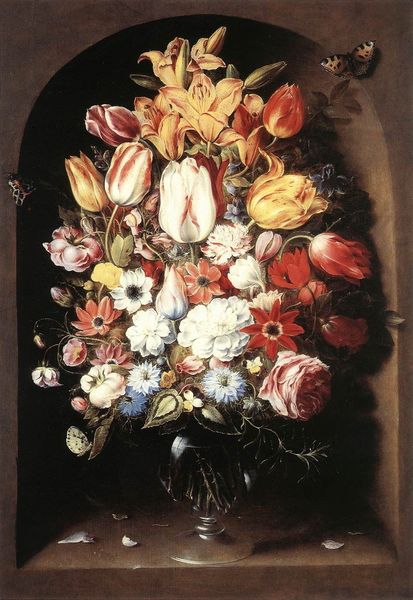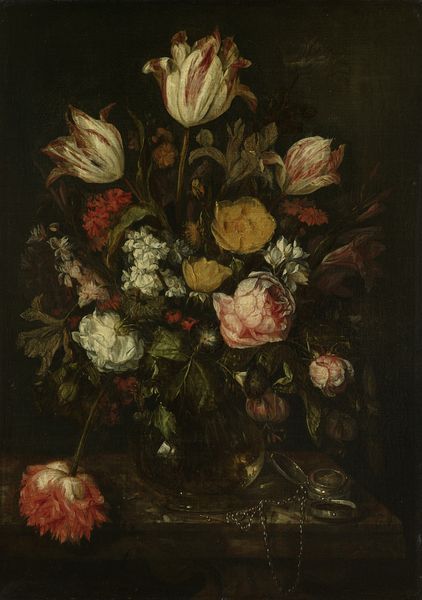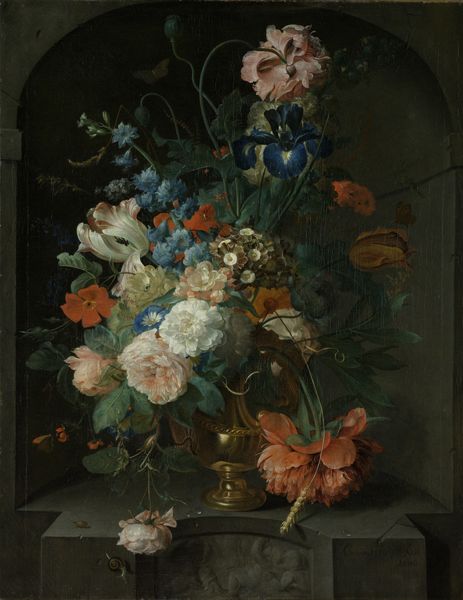
oil-paint
#
baroque
#
dutch-golden-age
#
oil-paint
#
oil painting
Dimensions: 27.5 cm (height) x 16.5 cm (width) (Netto), 33 cm (height) x 22.5 cm (width) x 3.5 cm (depth) (Brutto)
Curator: What a vibrant tableau! It practically vibrates with life. Editor: Indeed. This is "Bouquet of Flowers in a Stone Niche" created around 1620 by Roelant Savery. Notice how the artist uses oil paint to render such delicate textures? It is currently housed at the SMK, the National Gallery of Denmark. Curator: The dark niche amplifies the flowers’ presence, wouldn't you agree? There’s something intensely symbolic about presenting such ephemeral beauty against a background of near-nothingness. Are we invited to contemplate the transience of existence here? Editor: It certainly taps into that visual tradition. Still life paintings like this one often functioned as status symbols for the rising merchant class in the Dutch Golden Age. Savery’s meticulous realism demonstrated both wealth and a keen interest in natural philosophy, showcasing rare species, perhaps flowers acquired from far-flung trading routes. Curator: See how the insects and small creatures interrupt the idealized beauty of the bouquet. The lizard, the grasshopper... each is strategically placed to draw the eye, demanding attention beyond the superficial gloss. Are they merely decorative or carriers of coded meanings? Is this nature observed or nature allegorized? Editor: Maybe both. Savery was working within established visual frameworks. The popularity of flower painting coincided with both an emerging global market and increasing social awareness around environmental science. I think it captures some sense of the complex, evolving human relationship with the natural world. Curator: I'm drawn to how these contrasting ideas interweave. On one level, we celebrate nature’s abundance; on another, a more somber recognition creeps in – an intimation of the fragility that underscores all earthly splendour. A tension between the beautiful and the fleeting. Editor: Absolutely. And considering that such art was increasingly displayed in public spaces, in private homes made semi-public by mercantile gatherings, these paintings also fulfilled an important social function, shaping a sense of communal aesthetic and even identity. A statement about culture itself. Curator: Examining this painting through the lens of symbolism and history illuminates layers of significance – a convergence of beauty, mortality, and societal evolution expressed in a single frame. Editor: Yes, a poignant encapsulation of Dutch Golden Age sensibilities for us to ponder today.
Comments
No comments
Be the first to comment and join the conversation on the ultimate creative platform.
